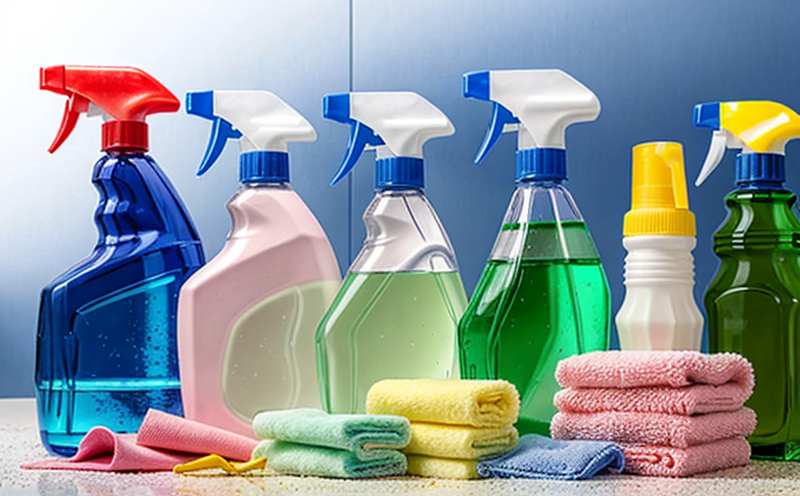Biofilm Removal Testing in Cleaning Products
When it comes to cleaning products and detergents, one of the most critical yet overlooked aspects is biofilm removal. Biofilms are complex communities of microorganisms that adhere to surfaces, forming a slimy matrix that can harbor harmful bacteria, fungi, and other pathogens. In consumer products, biofilms can pose significant health risks by allowing these microorganisms to persist on surfaces despite cleaning efforts.
Effective biofilm removal is essential for ensuring the safety and hygiene of consumer products. This testing service evaluates the ability of a cleaning product or detergent to remove biofilms from various surfaces. The process involves applying the cleaning agent to a controlled environment where biofilms are present, then assessing the extent of biofilm removal using standardized methods.
Testing biofilm removal is particularly important in sectors such as healthcare, food processing, and hospitality, where hygiene standards must be strictly maintained. By ensuring that biofilms are effectively removed, we help manufacturers meet stringent regulatory requirements and enhance consumer trust.
The testing methodology typically involves the following steps:
- Creating a controlled environment for biofilm growth on test coupons or surfaces
- Applying the cleaning product to the surface containing biofilms
- Rinsing and drying the surface as specified by the manufacturer
- Evaluating the remaining biofilm using visual inspection, microscopy, or quantitative methods
This service is crucial for quality managers, compliance officers, R&D engineers, and procurement teams who need to ensure that their products meet strict hygiene standards. By leveraging this testing, they can identify areas where improvements are needed and develop more effective formulations.
Understanding the significance of biofilm removal in cleaning products also involves recognizing its broader implications for public health. Biofilms contribute significantly to antimicrobial resistance, as pathogens within these communities become tolerant to disinfectants and antibiotics. By addressing this issue through rigorous testing and formulation development, we can contribute to a safer environment.
The applied standards for biofilm removal testing are based on international guidelines that ensure consistency and accuracy in the evaluation of cleaning products. These standards include methods for quantifying biofilms, assessing the efficacy of disinfectants, and evaluating the impact of cleaning agents on microbial populations.





